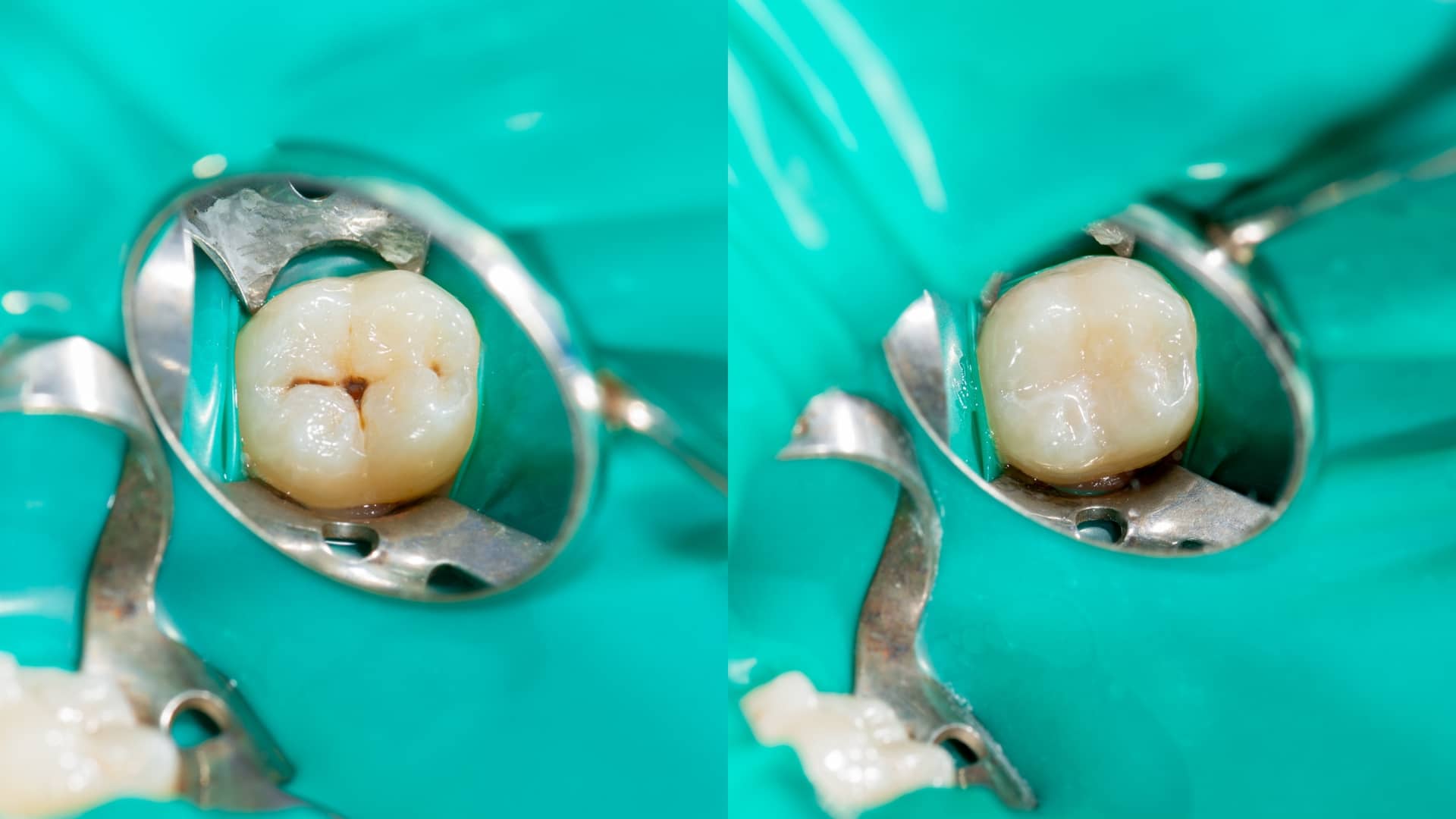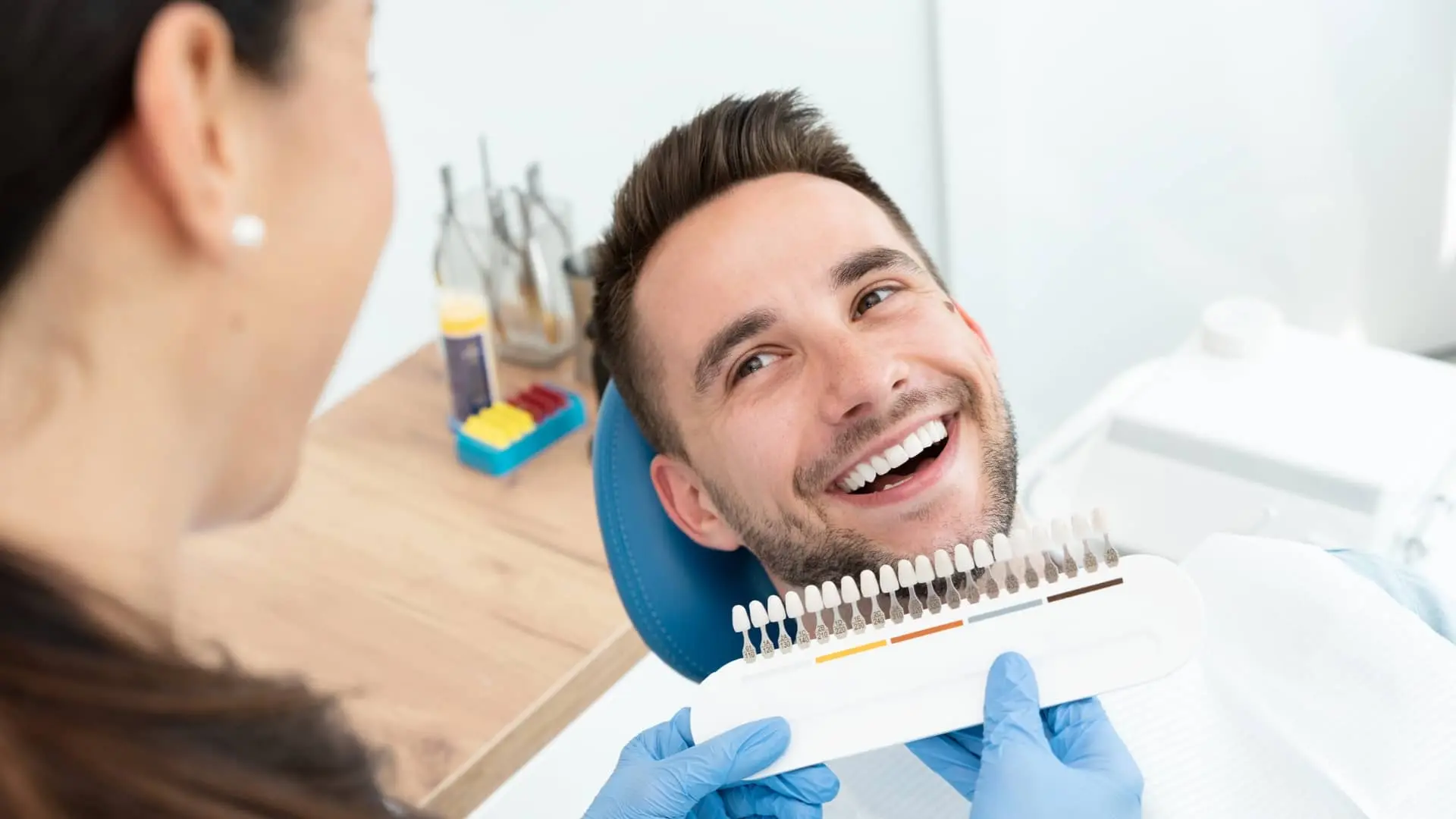
Dental Fillings
Dental fillings Cosmetic dental fillings refer to fillings that are used to improve the appearance of teeth, in addition to restoring function and preventing further

Dental extraction is a procedure in which a tooth is removed from the mouth. Extractions may be necessary for a variety of reasons, including decay, infection, crowding, orthodontic treatment, impacted teeth, and trauma. Extractions can be performed by a dentist or an oral surgeon, and are typically done in a dental office or clinic setting.
It is common for people to feel anxious or nervous about dental procedures, including tooth extractions. Some people may be afraid of experiencing pain, while others may be concerned about the potential for complications or the process of having a tooth removed. It is also possible that people may have had a negative experience with a dental procedure in the past, which can contribute to their fear.
It is important to remember that modern dentistry has come a long way, and tooth extractions are generally a routine and relatively simple procedure. Your dentist or oral surgeon will do everything possible to ensure your comfort and safety during the procedure. They will also provide you with aftercare instructions to help you manage any pain or discomfort and promote proper healing. If you are feeling anxious about a tooth extraction, it may be helpful to discuss your concerns with your dentist or oral surgeon. They can provide you with more information about the procedure and help to alleviate your fears.
There are several reasons why a tooth may need to be extracted, including:
Dental decay, also known as cavities or tooth decay, is a process that occurs when bacteria in the mouth produce acids that eat away at the surface of the tooth. If left untreated, dental decay can cause damage to the inner layers of the tooth, leading to pain, infection, and, in severe cases, it may need to be removed to prevent the decay from spreading to other teeth.
If a tooth is infected, the dentist may recommend a root canal procedure to remove the infected tissue and save the tooth. However, in some cases, the infection may be too severe or the tooth may be too damaged to be saved. In these cases, the dentist may recommend extracting (removing) the tooth to prevent the infection from spreading.
Dental crowding refers to a condition in which there is not enough space in the mouth for all of the teeth to fit properly. As a result, the teeth may be crooked, overlapping, or otherwise misaligned. If there is not enough room in the mouth for all of the teeth, some may need to be extracted to make room for the others.
Treatment for dental crowding may include orthodontic braces or other appliances to gradually move the teeth into their proper positions. In some cases, the extraction of one or more teeth may be necessary to create enough space for the remaining teeth to be properly aligned. If a tooth is blocking the proper alignment of the other teeth, it may need to be extracted as part of orthodontic treatment.
Impacted teeth are often the result of a lack of space in the mouth or problems with the position of the tooth. They can occur with any type of tooth, but they are most common with wisdom teeth (also known as third molars). Impacted teeth can cause pain, infection, and damage to adjacent teeth if not treated. Treatment for impacted teeth may include extracting the tooth
If a tooth is damaged due to trauma, such as from an accident or sports injury, the dentist may try to save the tooth through treatments such as a root canal or a crown (a cap that covers the damaged tooth). However, in some cases, the tooth may be too severely damaged to be saved. In these cases, the dentist may recommend extracting (removing) the tooth.
In general, teeth are only extracted as a last resort when all other treatment options have been exhausted. Your dentist or oral surgeon will be able to advise you on whether tooth extraction is necessary in your specific case.
Here is a general overview of the tooth extraction process:
During the consultation, your dentist or oral surgeon will examine your tooth and take x-rays to determine if extraction is necessary. They will also discuss the procedure with you and answer any questions you may have.
Before the extraction, you will be given a local anesthetic to numb the area around the tooth. This will help to minimize pain during the procedure.
The dentist or oral surgeon will use a tool called an elevator to gently loosen the tooth from the socket. This may take several minutes.
Once the tooth is loose, it can be removed with a forceps or a similar tool. If the tooth is broken or severely decayed, it may need to be removed in pieces.
Once the tooth is loose, it can be removed with a forceps or a similar tool. If the tooth is broken or severely decayed, it may need to be removed in pieces.
The dentist or oral surgeon will provide you with instructions on how to care for the extraction site and manage any pain or discomfort. It is important to follow these instructions carefully to ensure proper healing.
Overall, the tooth extraction process is generally quick and relatively painless, thanks to the use of local anesthesia. Most people are able to return to their normal activities within a few days of having a tooth extracted.

Dental fillings Cosmetic dental fillings refer to fillings that are used to improve the appearance of teeth, in addition to restoring function and preventing further

Dental Crowns & Bridges Dental prosthetics are a type of dental restorations that completely covers the visible portion of a tooth, restoring its shape, size,

Veneers Dental veneers are thin, custom-made shells that are designed to cover the front surface of teeth. They are typically made of porcelain or composite

Dental bleaching Dental bleaching, also known as teeth whitening, is a common procedure that helps to lighten the color of your teeth and remove stains

Paediatric dental care Primary teeth, also known as baby teeth, play an important role in a child’s overall health and development. They help children learn
For further information and to book your appointment
Al Itqan Dental Clinic © 2024. All rights reserved